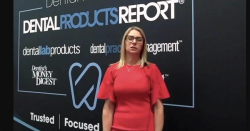- About Us
- Advertise
- Editorial
- Contact Us
- Terms and Conditions
- Privacy Policy
- Do Not Sell My Personal Information
© 2025 MJH Life Sciences™ and Dental Products Report. All rights reserved.
Raise the bar on customer service
Every dental practice engages in some degree of customer service in order to stay in business. However, in some offices the focus on customer service takes a back seat to the focus on clinical skill. The thinking might go something like this: “Patients come here to get dental work, not to talk about how their weekend went.”
Every dental practice engages in some degree of customer service in order to stay in business. However, in some offices the focus on customer service takes a back seat to the focus on clinical skill. The thinking might go something like this:
“Patients come here to get dental work, not to talk about how their weekend went.”
This mindset is ultimately misguided and shortsighted. When patients only get their dental needs met and don’t have positive social or psycho-emotional interactions with a practice, they view their experience as a transaction. And because it is a transaction they do not feel loyal to the dentist or to the office. These patients rarely refer because they do not perceive that they received anything special or meaningful that would attract a friend or colleague. A competing dental practice offering a “deal” or a more convenient location can easily entice these patients to leave. In fact, you may see the refugees from these offices show up as new patients in your office. These are the patients who left a dentist not because they were unhappy with their margins, but because they experienced a gap in customer service.
Get them beyond neutral
Patients who do not experience a viable difference in the way they were treated at a dental practice are neutral or unsatisfied customers. In fact, authors Thomas O. Jones and W. Earl Sasser, Jr. in a Harvard Business Review article called, Why Satisfied Customers Defect, suggested that even customers who are satisfied with their service as opposed to highly satisfied can and do leave. “Completely satisfied customers are - to a surprising degree-much more loyal than satisfied customers. They will only remain rock-solid if they are completely satisfied,” they wrote.
The authors highlighted four levels of customer service”
1. The basic product or service that customers expect all competitors to deliver
2. Basic support services
3. A recovery process for counteracting bad experiences
4. Extraordinary services that so excel in meeting customers’ personal preferences, in appealing to their values or in solving their particular problems that they make the product or service seem customized
Satisfying your patients isn’t enough. You have to turn them into highly satisfied patients by providing extraordinary service.
How do you define extraordinary?
Extraordinary is defined by the patient-not by you. The overall experience of going to your practice must not only exceed the patient’s expectations but it must also completely align with the patient’s values and preferences. You will be perceived as extraordinary when you create the impression that the patient is receiving treatment (both clinical and relationship-oriented) that is personalized for the patient’s unique needs.
In order to do this, you must make the effort to know and understand your patients. This goes further than simply asking them about their weekends. You need to ask about what they truly value and need from you. And then you must stop, listen and reflect on their answers. When you can connect your treatment plan to what the patient values and wants in life, you create the perception of personalized treatment.
Fred Lee, wrote in his book, If Disney Ran Your Hospital that, “To exceed the patient’s expectations and get a ‘five’ (very satisfied) it takes somebody who goes beyond doing a task in a courteous way. Because of the emotional distress that accompanies most healthcare problems, this usually means doing or saying something that shows a genuine concern for the patient’s state of mind. It means exhibiting some heartfelt empathy for the patient’s anxiety and pain.”
Creating a customer service culture at your office with empathy or “heart” as its central element will lead you and your team to engage naturally in extraordinary customer service.
What are my next steps?
Following are simple yet effective ways to raise the customer service bar at your practice.
1. Offer new patients a tour of your office, showing off diplomas, certificates of achievement, technology and, of course, the patient bathroom.
2. Take the blood pressure of all new patients and give them their reading on an appointment or business card.
3. Send new patients a hand-written thank you letter after their first visits.
4. Hold monthly contests (example: guess the number of toothpicks in a jar) to win a prize at a local establishment.
5. Offer gift certificates for patients who are kept waiting for their appointments.
6. Sponsor patient appreciation days when patients are offered a food item such as a slice of banana bread or muffin after their visits.
7. Offer hospitality and comfort items such as blankets, juice, lip balm, protein/yogurt shakes, etc.
8. Buy reading glasses of varying strengths for patients who forget to bring their glasses.
9. Send anniversary cards to patients on their first, 5th and 10th year anniversary of their first visits.
10. Send flowers or gift basket to a patient’s workplace after completion of large treatment.
These actions, by themselves, may not convert neutral or satisfied patients into highly satisfied customers. Every customer service initiative must be accompanied by personal, compassionate communication skills and excellent clinical care. The entire team must embrace the idea that they represent the practice’s philosophy and their own highest values in every interaction. This is the core of excellent customer service.
In addition to being the published author of two books about experiential training, SharynWeiss is a contributor to the 2001 and 2004 versions of the Training and Performance Sourcebook. At Pride Institute, she serves a dual role in assisting in curriculum development and consulting. Ms. Weiss holds a B. from Queens College and a MA degree in Training and Development from Ohio State University.



